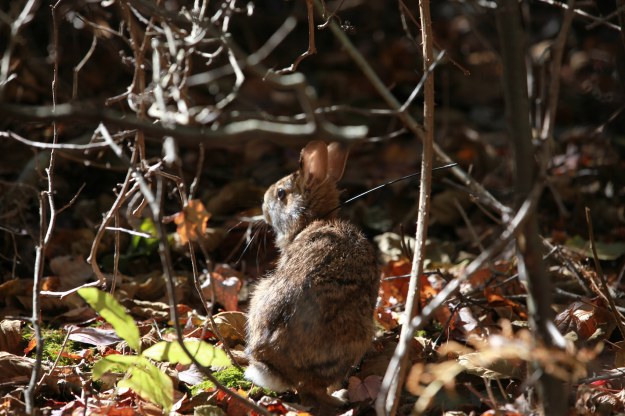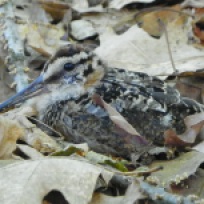Today you’re hearing from Ted Kendziora, biologist with our New England Field Office in Concord. Ted’s career in natural resources has brought him to places ranging from New Hampshire to Florida and from work with the U.S. Forest Service and U.S. Department of Agriculture to consulting with private firms. His work has focused on species surveys, regulations, development, and habitat restoration.
Connecticut Public Radio reporter Patrick Skahill pulled up and got out of his car to greet me. His microphone and recorder were already strapped to his chest. It’s go time, but I’m not sure if I’m ready. What kinds of questions would he ask? Would my responses make sense?
We had an army at the project site to meet Patrick, where we were in the process of removing pockets of trees to improve young forest habitat (think: the sounds of roaring machinery, cracking tree trunks and breaking branches in the background). The landowner, his grandson, USDA-Natural Resource Conservation Service staff, the landowner’s forester, logger, and I had gathered early to go over what I thought was going to be asked of us. We were all good. We are all professionals. But no doubt about it, I was nervous.
As I said, Patrick showed up ready to go. We all greeted him and he asked if we were ready, and then he began recording. He held up his microphone, which was covered in fur and looked like the size of a rabbit (have I mentioned that this project will benefit the New England cottontail?), and asked us our names. We all went silent. I think I told him my name was Ken Kendz, no, Ted Kendziora. Great start, right?

Old growth is removed to make way for young forest, the preferred habitat for many species, like New England cottontail! Credit: Patrick Skahill / WNPR
Well, after several minutes, things began to loosen up. We all started talking, and eventually it was like the microphone wasn’t even there anymore. I even caught myself during one of my comments, and had to change my thought mid-sentence to make it a little more family friendly I guess. (I was trying to describe how all kinds of animals seek out young forest habitat–it’s like a mall where they can get food, shelter and meet other people. I was about to say to hook-up. Oops.)
So back to my topic: Perspective. As a wildlife biologist focused on private lands, I spend a lot of my time talking with landowners and seeking to understand what they’d like their land to be like. Looking at a project from another point of view has helped me to understand what other people see and what we can do that will help them and help wildlife.
While talking to Patrick, I explained that I had met with landowner, Dr. Chris Glenney, to gain an understanding of what he and his family wanted on their property. What you didn’t hear in the interview was that this understanding came after about two years of communications with Dr. Glenney, now 90 years old, and his 7+/- children, 30+/- grandchildren, and not to mention his great-grandchildren (and I write this with a smile on my face). He’s protecting the land from development through a conservation easement, while still allowing his family to manage a Christmas tree farm, a sawmill, a blueberry harvest, and an irrigation pond.
After several phone calls, meetings, site visits, and dinners with the family, we all created an agreement of what we wanted the property to look like. Fortunately, Dr. Glenney’s vision and our agency’s goals were on the same path. He wanted a young forest. Not for cottontail, but for birds. The birds he had on his property over 50 years ago: grouse, bobwhite quail, and American woodcock.
Fortunately for us, those birds like what New England cottontails like: thick shrubs, saplings, and young trees. We must create more of this habitat to bring back New England’s only native rabbit. The project happily married our visions.
Understanding what the Glenneys wanted for their property made it very easy for me to communicate with all of them. Each person had their own opinion or point of view, but we worked together and made this project happen.
The WNPR interview gave me an opportunity to hear each person share their unique point of view on this project. It was a pleasant reminder of our different perspectives, and a good illustration of how joining differing ideas can be a success.
I certainly learned many things that will help me on my next project.
Read the original interview at WNPR.








Pingback: Woodland Owners are Key to Improving Wildlife Habitat | U.S. Fish and Wildlife Service Northeast Region